24.06.2024
The winged vehicle named Pushpak, was released from an Indian Air Force Chinook helicopter at an altitude of 4.5 km
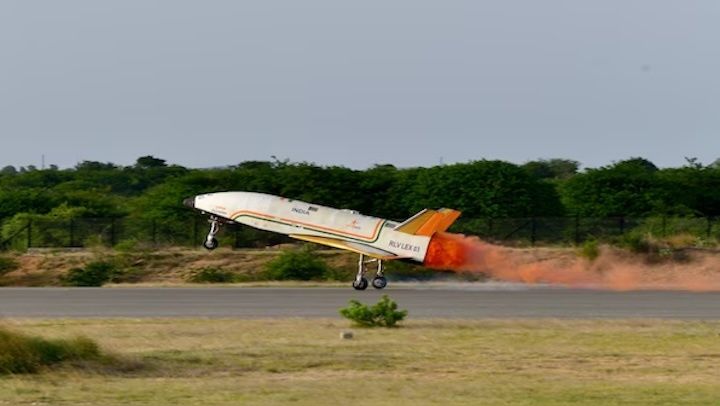
The Indian Space Research Organisation (ISRO) hit another milestone on Sunday after successfully conducting the third and final Reusable Launch Vehicle (RLV) Landing Experiment (LEX). This was the third and final test in the series of LEX(03) and was conducted at 7:10 IST at the Aeronautical Test Range (ATR) in Chitradurga, Karnataka.
ISRO took to X, formally known as Twitter to share the news. “ISRO achieved its third and final consecutive success in the Reusable Launch Vehicle (RLV) Landing EXperiment (LEX) on June 23, 2024,” the space agency wrote on X.
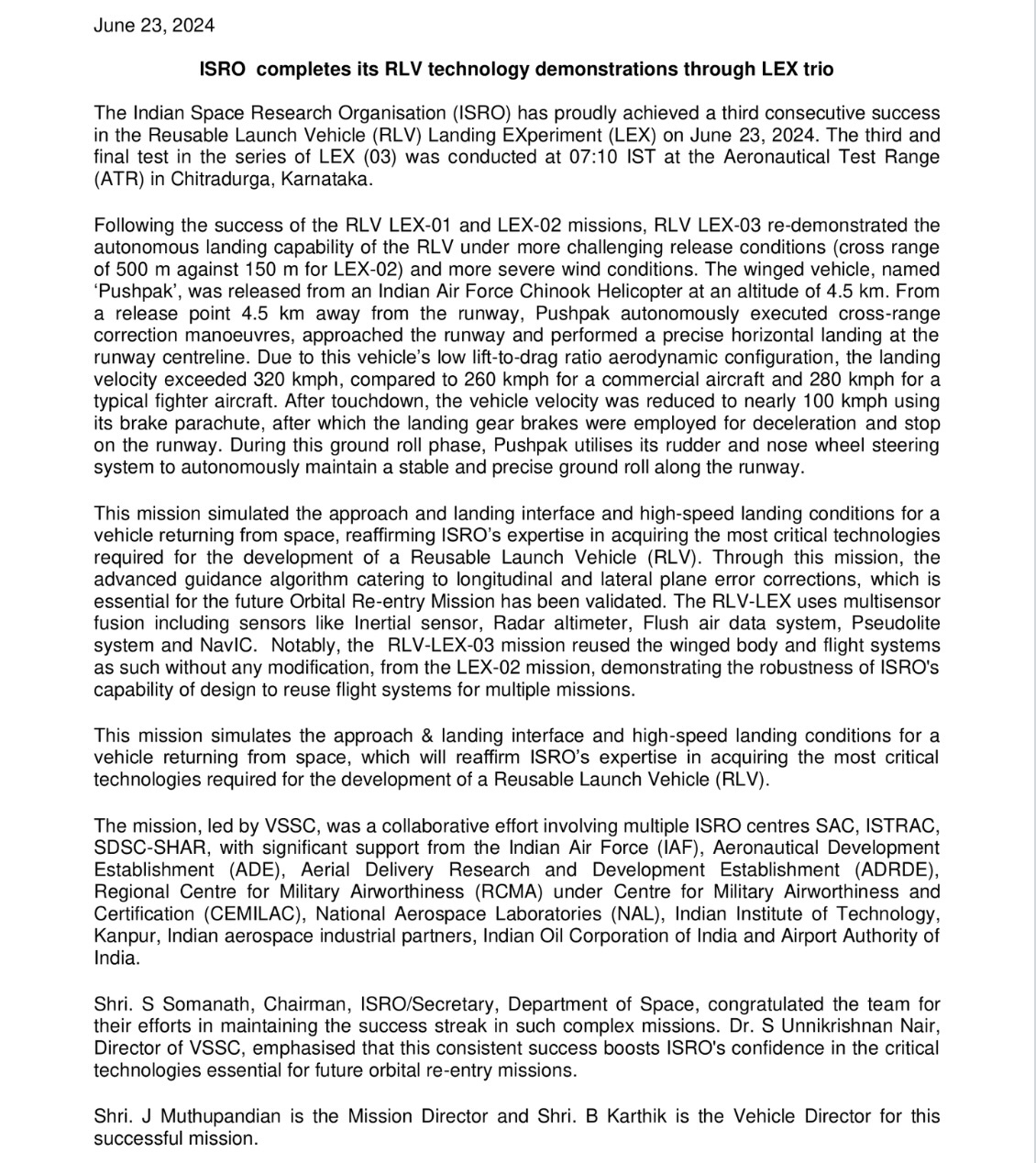
“Pushpak” executed a precise horizontal landing, showcasing advanced autonomous capabilities under challenging conditions. With the objectives of RLV LEX accomplished, ISRO embarks into RLV-ORV, the orbital reusable vehicle," the statement further reads.
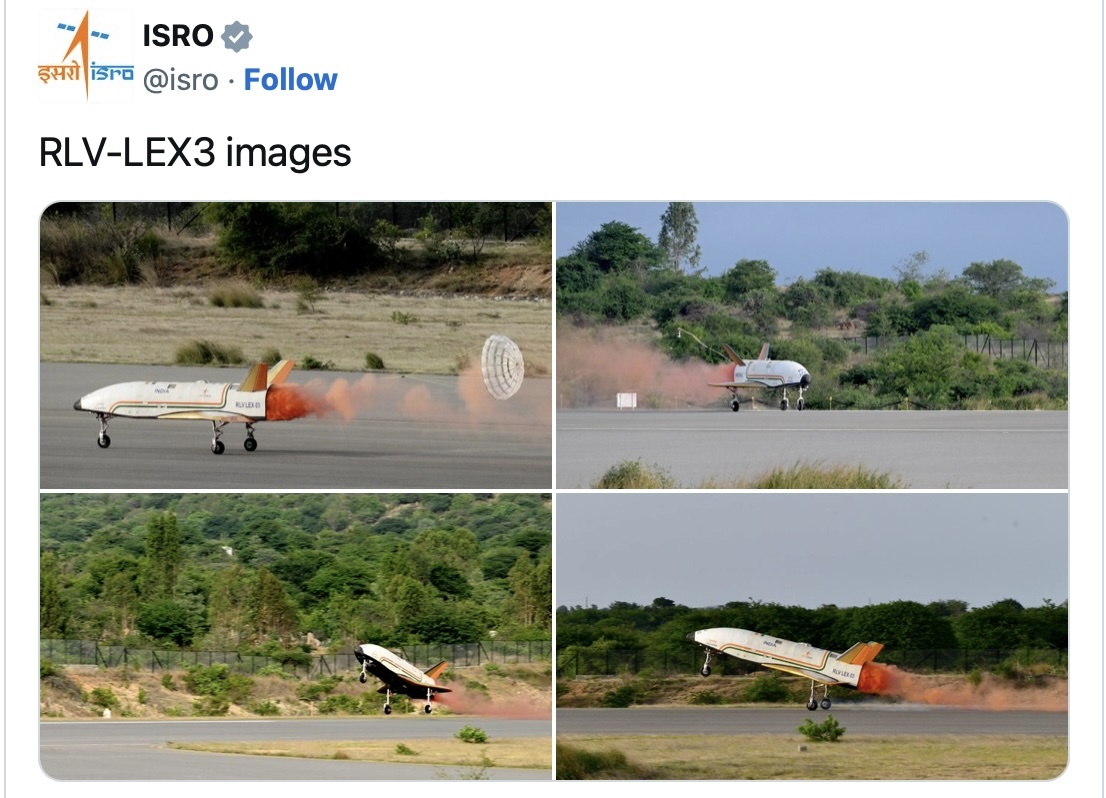
About the test
The winged vehicle named Pushpak, was released from an Indian Air Force Chinook helicopter at an altitude of 4.5 km. According to ISRO, Pushpak autonomously executed cross-range correction manoeuvers, approached the runway and performed a precise runway landing at the runway centerline.
The mission attempted to stimulate high-speed landing conditions for a vehicle that was returning from space. Not only this, the RLV-LEX-03 mission reused the winged body and flight systems from the LEX-02 mission, demonstrating the robustness of Isro’s capability of design to reuse flight systems for multiple missions.
During the ground roll phase, Pushpak utilised its rudder and nose wheel steering system to autonomously maintain a stable and precise ground roll along the runway.
The mission is a collaborative effort between multiple Isro centres, the Indian Air Force, and other organisations. The mission was led by the Vikram Sarabhai Space Centre (VSSC). After the news of the successful landing ISRO Chairman S. Somanath congratulated the team for their efforts in maintaining the success streak.
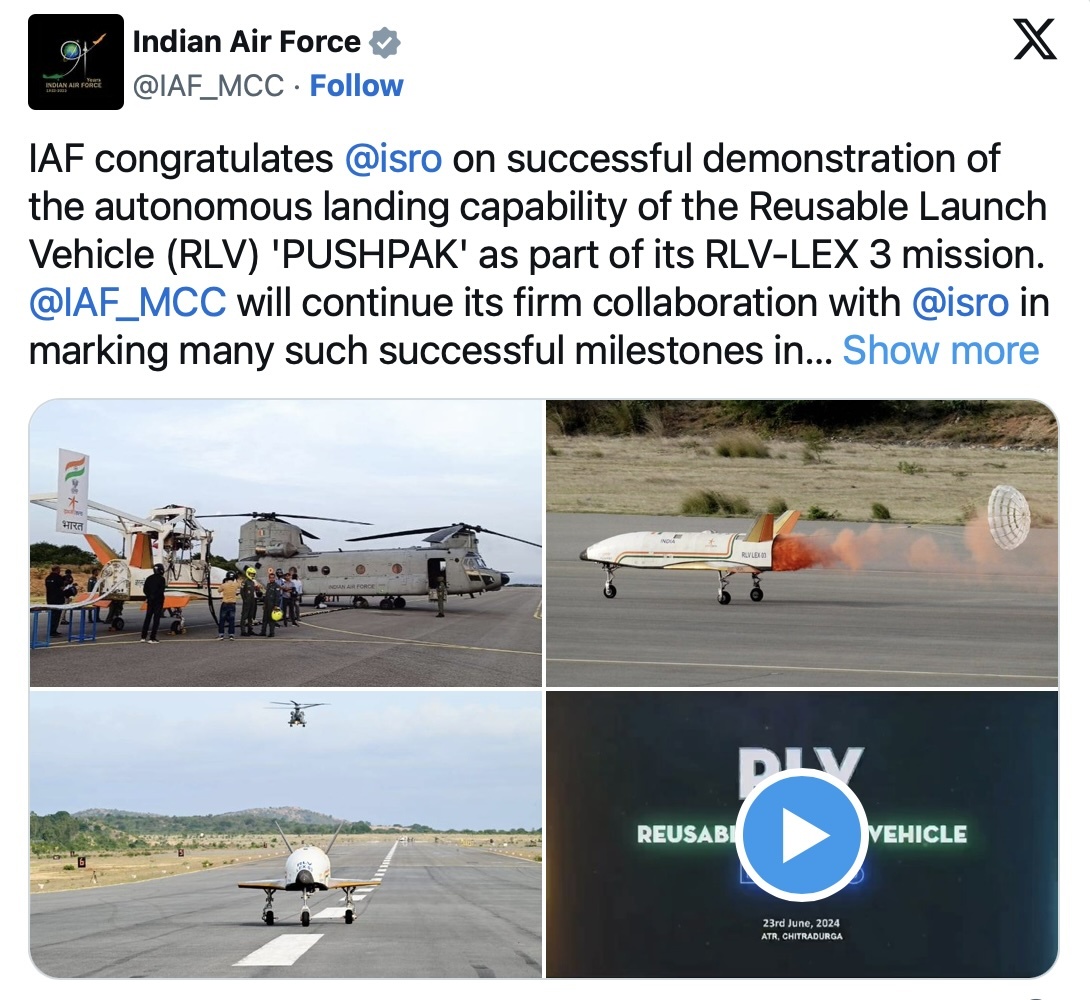
The Indian Air Force also took to X to share the visuals from the test mission. “AF congratulates @isro on successful demonstration of the autonomous landing capability of the Reusable Launch Vehicle (RLV) ‘PUSHPAK’ as part of its RLV-LEX 3 mission,” the IAF wrote on X. “@IAF_MCC will continue its firm collaboration with @isro in marking many such successful milestones in future,” the statement further reads.
Quelle: Firstpost
----
Update: 25.06.2024
.
ISRO completes its RLV technology demonstrations through LEX trio
The Indian Space Research Organisation (ISRO) has proudly achieved a third consecutive success in the Reusable Launch Vehicle (RLV) Landing EXperiment (LEX) on June 23, 2024. The third and final test in the series of LEX (03) was conducted at 07:10 IST at the Aeronautical Test Range (ATR) in Chitradurga, Karnataka.
Following the success of the RLV LEX-01 and LEX-02 missions, RLV LEX-03 re-demonstrated the autonomous landing capability of the RLV under more challenging release conditions (cross range of 500 m against 150 m for LEX-02) and more severe wind conditions. The winged vehicle, named ‘Pushpak’, was released from an Indian Air Force Chinook Helicopter at an altitude of 4.5 km. From a release point 4.5 km away from the runway, Pushpak autonomously executed cross-range correction manoeuvres, approached the runway and performed a precise horizontal landing at the runway centreline. Due to this vehicle’s low lift-to-drag ratio aerodynamic configuration, the landing velocity exceeded 320 kmph, compared to 260 kmph for a commercial aircraft and 280 kmph for a typical fighter aircraft. After touchdown, the vehicle velocity was reduced to nearly 100 kmph using its brake parachute, after which the landing gear brakes were employed for deceleration and stop on the runway. During this ground roll phase, Pushpak utilises its rudder and nose wheel steering system to autonomously maintain a stable and precise ground roll along the runway.
This mission simulated the approach and landing interface and high-speed landing conditions for a vehicle returning from space, reaffirming ISRO’s expertise in acquiring the most critical technologies required for the development of a Reusable Launch Vehicle (RLV). Through this mission, the advanced guidance algorithm catering to longitudinal and lateral plane error corrections, which is essential for the future Orbital Re-entry Mission has been validated. The RLV-LEX uses multisensor fusion including sensors like Inertial sensor, Radar altimeter, Flush air data system, Pseudolite system and NavIC. Notably, the RLV-LEX-03 mission reused the winged body and flight systems as such without any modification, from the LEX-02 mission, demonstrating the robustness of ISRO's capability of design to reuse flight systems for multiple missions.
This mission simulates the approach & landing interface and high-speed landing conditions for a vehicle returning from space, which will reaffirm ISRO’s expertise in acquiring the most critical technologies required for the development of a Reusable Launch Vehicle (RLV).
The mission, led by VSSC, was a collaborative effort involving multiple ISRO centres SAC, ISTRAC, SDSC-SHAR and IISU, with significant support from the Indian Air Force (IAF), Aeronautical Development Establishment (ADE), Aerial Delivery Research and Development Establishment (ADRDE), Regional Centre for Military Airworthiness (RCMA) under Centre for Military Airworthiness and Certification (CEMILAC), National Aerospace Laboratories (NAL), Indian Institute of Technology, Kanpur, Indian aerospace industrial partners, Indian Oil Corporation of India and Airport Authority of India.
Shri. S Somanath, Chairman, ISRO/Secretary, Department of Space, congratulated the team for their efforts in maintaining the success streak in such complex missions. Dr. S Unnikrishnan Nair, Director of VSSC, emphasised that this consistent success boosts ISRO's confidence in the critical technologies essential for future orbital re-entry missions.
Shri. J Muthupandian is the Mission Director and Shri. B Karthik is the Vehicle Director for this successful mission.
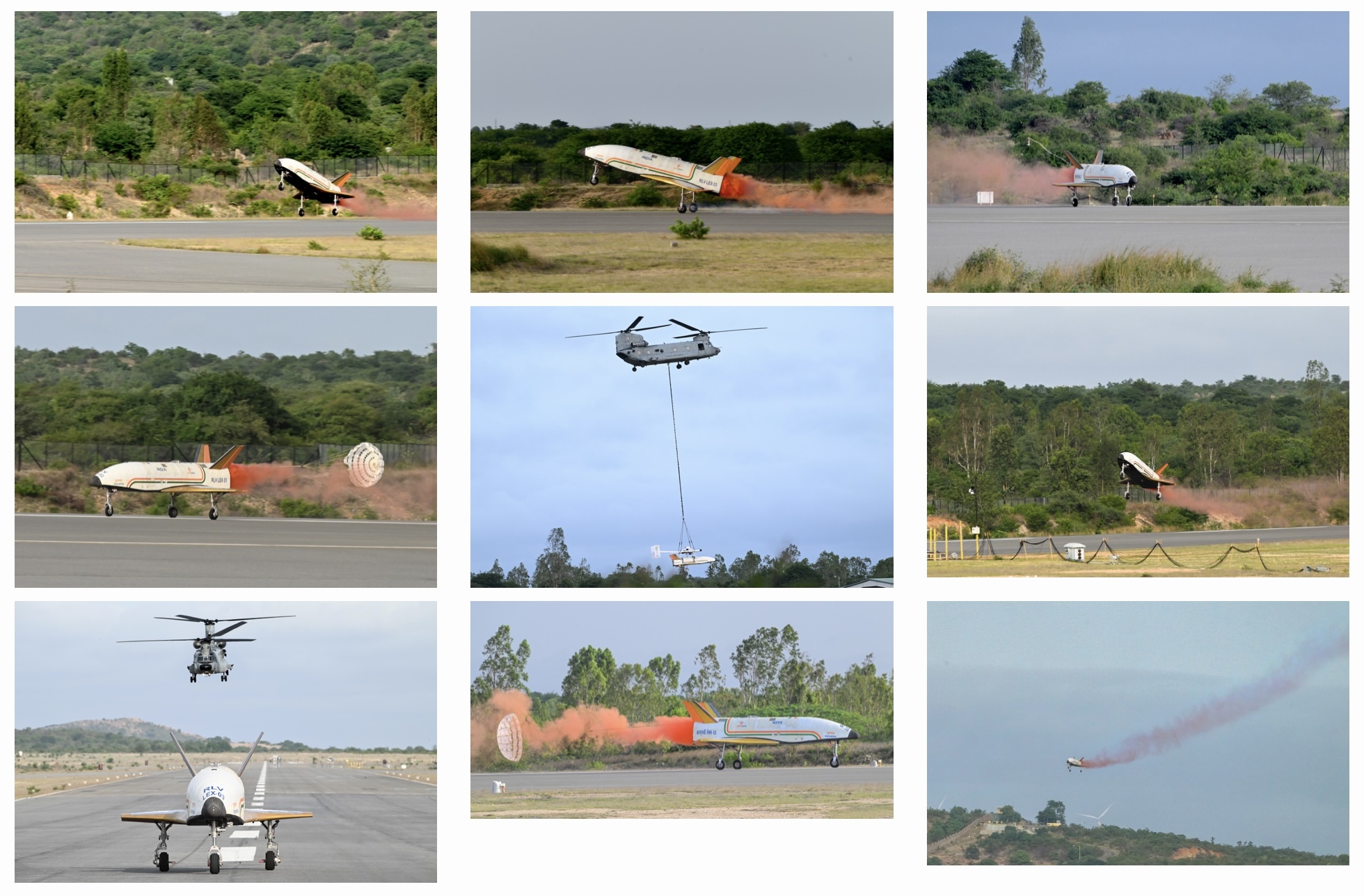
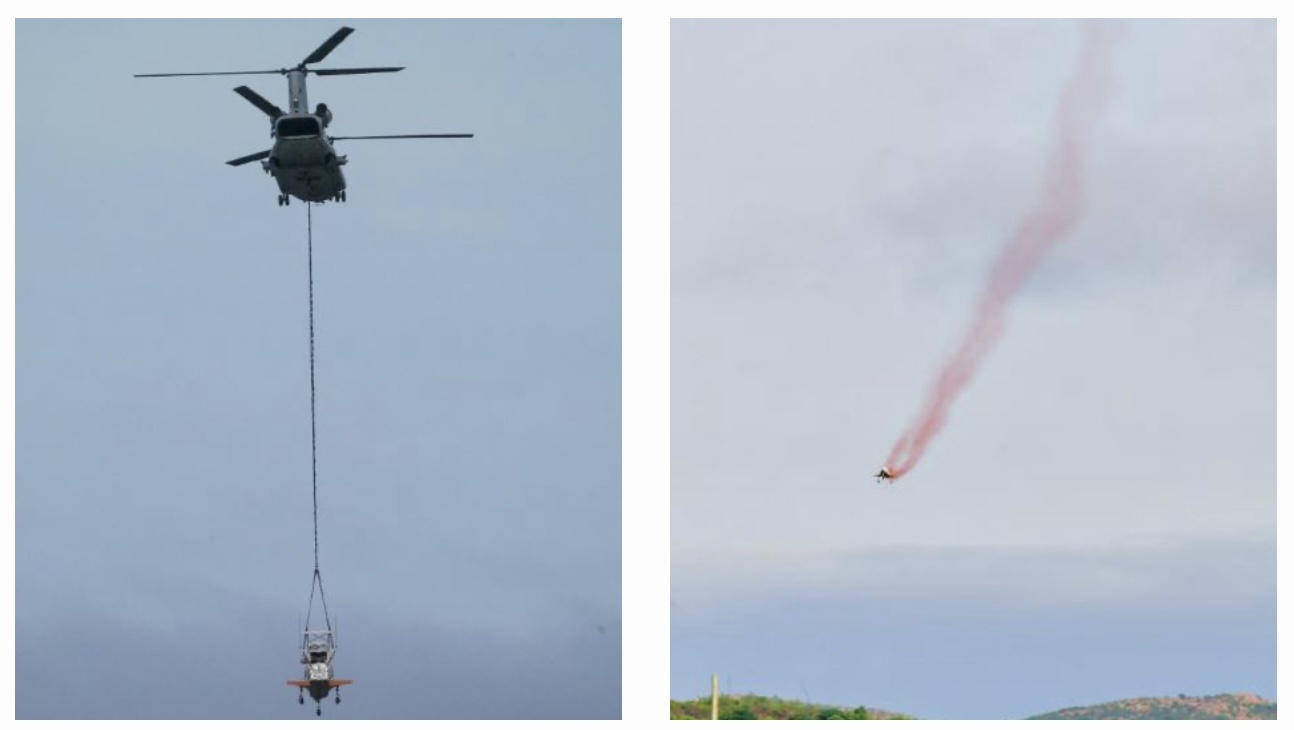

Quelle: ISRO
